Write Us
We are just a call away
[ LET’S TALK AI ]
X
Discover AI-
Powered Solutions
Get ready to explore cutting-edge AI technologies that can transform your workflow!

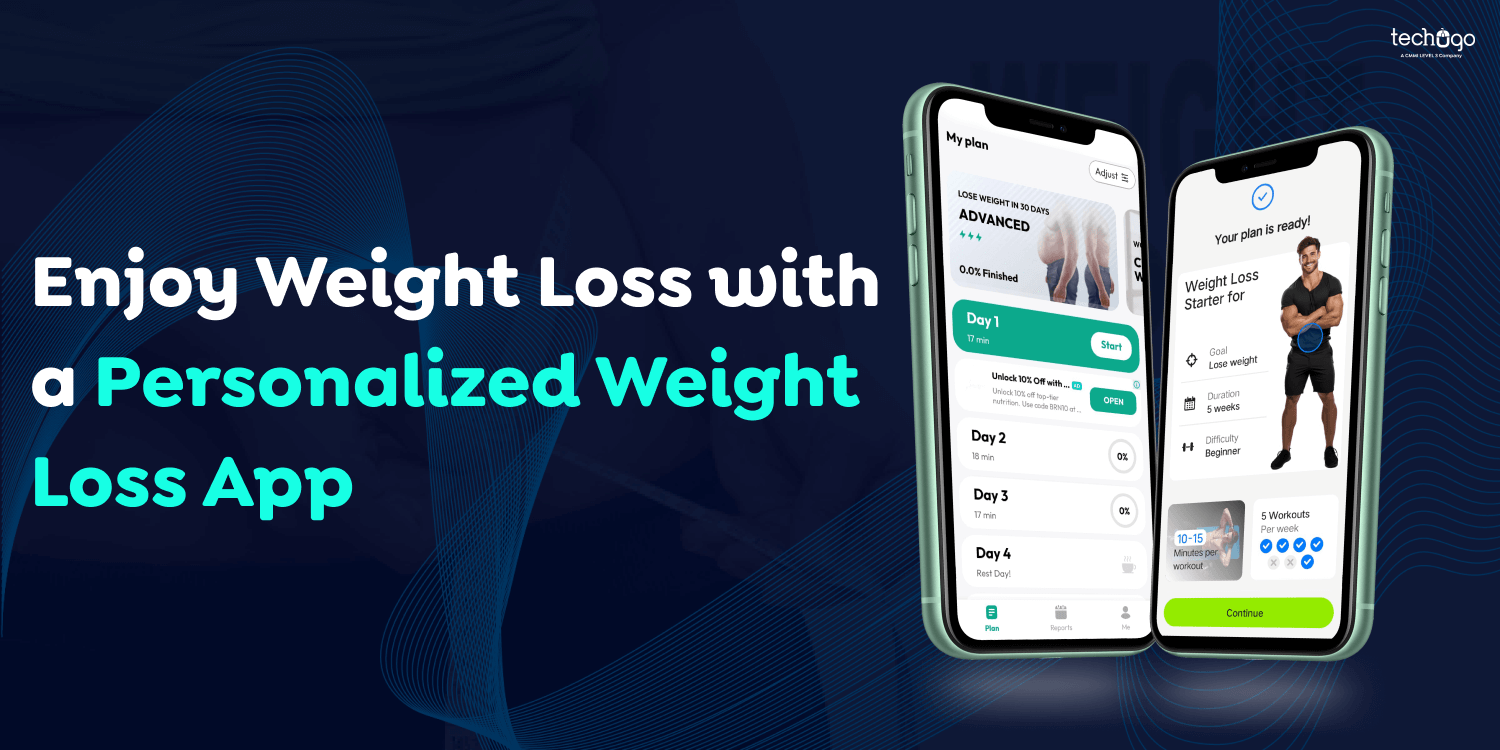
It all began two years ago when I discovered that I had PCOS. As a healthy child, gaining weight in one month was a significant surprise. This is what drove me to my gynecologist. He gave me the news that the loss of weight was essential in battling my PCOS. This is the way my weight loss journey began.
This is the truth: PCOS affects an estimated 8 to 3 percent of females of reproductive age. Shocking, right? It’s not only about PCOS. Obesity and overweight are a problem that is widespread and affects almost 2.3 billion children and adults across the globe. These were some of the most shocking facts I learned in 2022. They ignited a fire in me. So, I began with my home workouts and an enlightened diet. But what made the most significant change? weight loss apps. They’ve been an extremely helpful tool, and I’ve wanted to share my thoughts on them for quite a long time.
Many people just like me have received a lot of help via these weight loss applications. Then, I got to share my fantastic knowledge with you, everyone!
By making the weight loss process more fun by gamifying it and providing assistance and educational material, they can encourage users to take action. Partnering with a mobile app development company can allow you to develop an app to reduce weight that is a standout in the crowded health and wellness industry and appeals to a specific segment of the market.
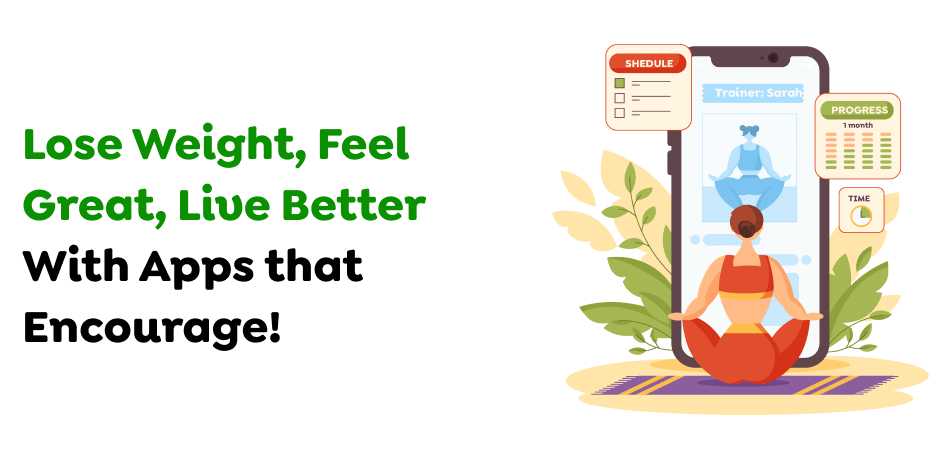
Various nutrition and diet apps cater to the specific requirements of the targeted people. However, all of these apps are slightly different in their basic functions. Check out the top food and nutrition apps.
During meal planning, participants must verify the food items’ calories before consuming them. The application for planning meals and tracking progress permits users to record their weight, diet, and food preferences. The app will give an eating plan as well as suggestions for managing eating habits and the nutritional value of food.
For example, Diet Assistant in meal-planning apps assist users create a food chart for the month or week and then planning the meals they’d like to eat without putting too much pressure on their overall health.
The apps for calculating calories aim to measure calories, which can aid users in reaching their weight-loss goals. They also provide information on foods and other activities to increase calorie intake. The Calories counting apps put you in the lead in counting the calories burned and consumed to ensure that the app users are informed about their daily calorie consumption.
Lose it! MyFitnessPal, Apple Health, and FatSecret are a few of the most popular apps for measuring calories. These apps help you monitor your diet and track calories throughout the day.
The apps for weight loss specifically aid users in losing weight without a crash diet that harms their health. They allow users to monitor their meal and drink intake by manually filling in the details within the app, monitor their consumption of calories and burning, and offer a fitness program to aid in weight loss. Certain mobile apps reward users who have achieved their weight loss goal and encourage users to adhere to the plan to lose weight.
Users who plan to follow specific diets can eat what they want at home without sacrificing flavor or health. The app for nutritious food recipes has recipes based on the user’s size, weight, and preference to lead a healthy life, such as calories, fats, carbohydrates, and protein, as well as glucose levels at lunch, breakfast, and dinner. The recipes provide all calculations based on the amount and quantity of ingredients included in the dish.
Super apps offer everything from meal plans (including suggestions for food-related recipes) and calories consumed to tracking nutrition and real-time data for the same. The MyFitnessPal app is the top example of this.
The market for apps to lose weight is highly crowded. However, when you take the proper approach, you can make an app that stands out from the clutter and gains the user engagement of a loyal audience. Here are a few essential aspects to think about, with a focus on those that can differentiate your app.
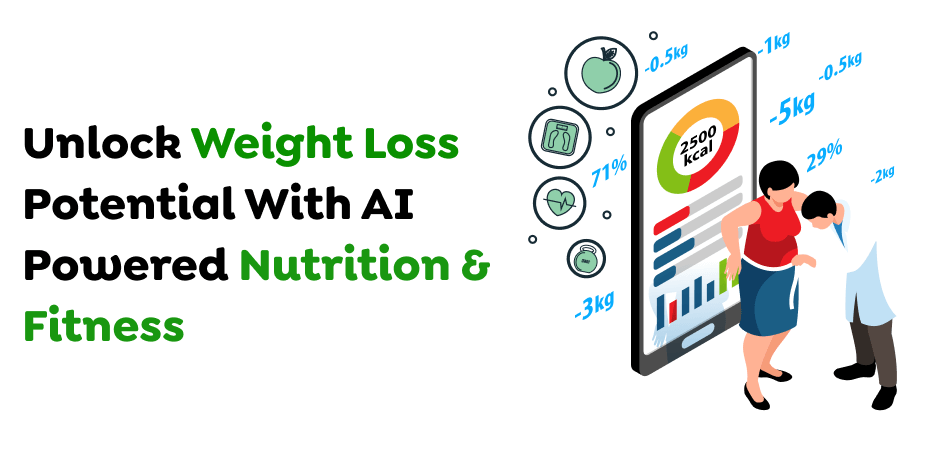
This is the base. Features such as barcode scanning, an extensive food database (including international options to appeal to a global audience), voice recognition to log food, and the ability to create custom meals with portion size guidelines make it simple to track calories consumed.
Move beyond the basics of calories. Additionally, it allows users to monitor macronutrients (carbohydrates, proteins, carbs, fat) in various ways (grams or percentages), vitamins, minerals, and other important information about nutrition, such as sugar, fiber, and sodium. This allows people to make informed food choices based on their personal health objectives.
Use cutting-edge AI technology to take your food logs to a new level. For instance, it lets users take a photo of their meals in a snap. The app automatically calculates and identifies nutritional content, even for complex menu items or restaurant meals. This means there is no need to do manual searches, and it assures accuracy.
Make customization even more personal by providing personalized meals based on your individual requirements, objectives, preferences, and goals. This is possible by integrating specific health information or restrictions on dietary intake (e.g., gluten-free, gluten-free, and diabetic-friendly) and information on allergies to provide reliable and safe meal suggestions.
Connect seamlessly to popular wearables and fitness monitors to transfer data on activity levels and provide an overall view of calories consumed and expenditure. It also automatically adjusts the calorie goal according to daily activity levels, providing an interactive and personal experience.
Work with recipe platforms or create a nutritious recipe library that takes into account different cultural tastes. Additionally, it allows users to download recipes, compute nutritional data by serving size, and keep track of meals through the application. This makes meal planning easier and encourages users to look into healthier recipes.
Create a fun way to count calories and be excited. Introduce gamified elements such as badges, points, and leaderboards to encourage users and foster the feeling of belonging. Add social elements like group challenges or healthy recipe contests for entertainment and social support.
Give users insightful information visualizations and reports to monitor changes over time. These could include breakdowns by macronutrients across various time frames, weight trends, and comparisons with goals set and achievement metrics for the completed challenges.
Integrate AI to offer personalized reviews and coaching based on user information. This could include providing healthy recipes based on recorded food preferences and meals, identifying areas that could improve macronutrient intake or calorie balance, or offering specific guidance for motivational goals and progress.
Build a supportive community by incorporating forums or chat tools that let users meet like-minded people to share their experiences, swap healthy recipes, and encourage each other. Social interaction can be an excellent motivator for users and aid them in staying on track with their fitness objectives.
Below are some of the processes for creating a feature-rich application for losing weight:
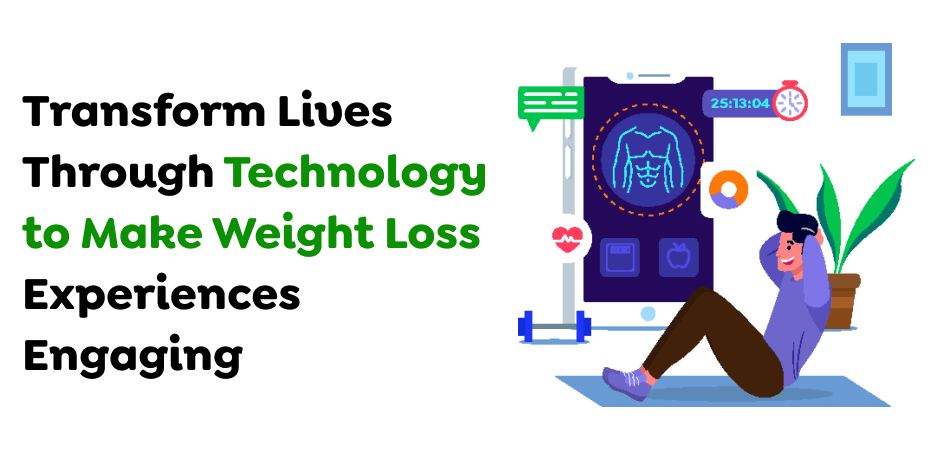
Before you begin, it’s important to comprehend the market. Conduct thorough market research to determine specific demographics for your audience, review existing weight loss programs, and evaluate their strengths and flaws. This will enable you to determine weaknesses in the market and create a distinct segment for your application.
What is it that sets your app apart? Define its primary functions (seamless track of calories, comprehensive nutrition information) and determine the distinct benefit that will draw customers. This could include AI-powered food recognition, personalized meal plans, or a strong emphasis on a specific diet desire (e.g., vegan, vegetarian, or diabetic).
When you have a clear idea, transform your vision into an image. Move into wireframing and prototyping to show the UX and UI of your application. This lets you try out different layouts and functionalities with potential users, gather valuable feedback, and refine your concept.
Selecting the appropriate technology stack is crucial. Select the frameworks and programming languages suitable for creating mobile applications. You’ll need to decide if you’d like to create applications for Android, iOS, or both. It is worth considering partnering with skilled app developers who will make your concept come to life and guarantee smooth integration of different features, such as barcode scanning or wearable connectivity to devices.
A dependable weight loss program is based on accurate data. Integrate with extensive databases of food that cater to your group’s preferences in terms of diet. Data security should also be considered a top priority, as robust encryption methods should be used to safeguard user privacy and sensitive health information.
A rigorous testing process is crucial. Test your app on various platforms and devices to verify the functionality, find and fix bugs, and improve your user interface. When satisfied, release your application to the relevant app stores by the guidelines and submission procedures.
A successful app needs more than just development. Create a complete marketing strategy to target your users. Use the power of social media, influential partnerships, and app store optimization to ensure your app is found.
The process of developing apps continues after the launch. Monitor user feedback, app analytics, and market and consumer trends to pinpoint areas of improvement. Make sure to regularly upgrade your app with the most current new features, bug fixes, or security patches to keep your users entertained and maintain your competitive edge.
The cost of weight loss app development can vary immensely based on the features of the app complexity, features, and platform it’s designed for. If you want to create a simple application with limited features, you could expect a price that ranges from $10,000 to $25,000.
To add more advanced features such as fitness guides, food tracking, or social integration customized coaching, the development cost can rise to between $50,000 and $150,000 or more. It is important to take into consideration the ongoing cost of maintaining and improving the app, which is vital to keeping users interested and could make up an important portion of the total cost required to build the app in its lifetime.
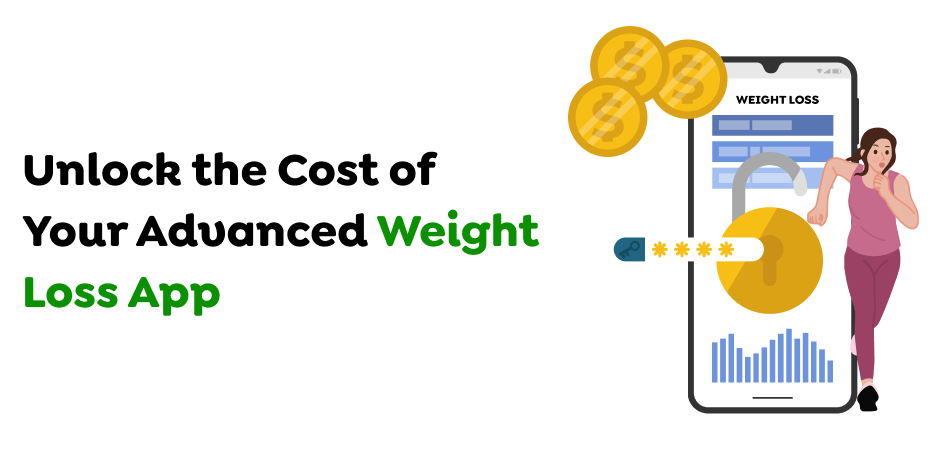
The cost of creating an app to lose weight will vary based on various factors like the features, platform, and level of complexity. Here are some possible costs to think about:
Hiring an experienced healthcare app development company and designers will be the most significant expense in developing a weight loss application. You’ll require skilled professionals who can not just create the app but also ensure the app’s performance, usability, and security. They’ll work on your user interface (UI) and the user experience (UX) layout and then implement features such as keeping track of energy levels, setting objectives, and providing recommendations based on your preferences.
App Store and Google Play Store levy an annual fee for hosting your application. The cost can vary from $25 on Google Play to $99 on the App Store. The fees pay for the cost of maintaining and distributing your application on their platforms. In addition, they give access to an extensive user base and numerous tools for app analytics review, customer feedback, and app updates.
If you intend to integrate with different applications or platforms, you might have to pay additional fees. For instance, if you would like to integrate with a device for tracking health and a nutrition database, you might have to pay licensing fees or API usage fees. These integrations will enhance the capabilities and value of your application by providing users with seamless access to their existing fitness and health tools.
To ensure that your app’s reach is a broad market, you need to invest in promotional and marketing initiatives. This includes app store optimization, social media ads and influencer partnerships. Social media strategy for advertising helps you target specific demographics and interact with potential customers. Collaboration with influential people in the fitness and health sector will help generate excitement and trust in your product. Optimizing your app store for mobile will increase your app’s visibility in search results and increase downloads.
When the app is launched, it will need periodic maintenance and updates to keep pace with user feedback and the latest technological advances. This includes fixing bugs, enhancing performance, and introducing new features in response to user requests. Regular updates show your commitment to providing an excellent user experience. You must also ensure your app is up-to-date with the latest technology and operating systems.
After you’ve completed your nutrition plan and nutritional app development, your brain must focus on ways to get an optimal return on your weight loss app’s development costs.
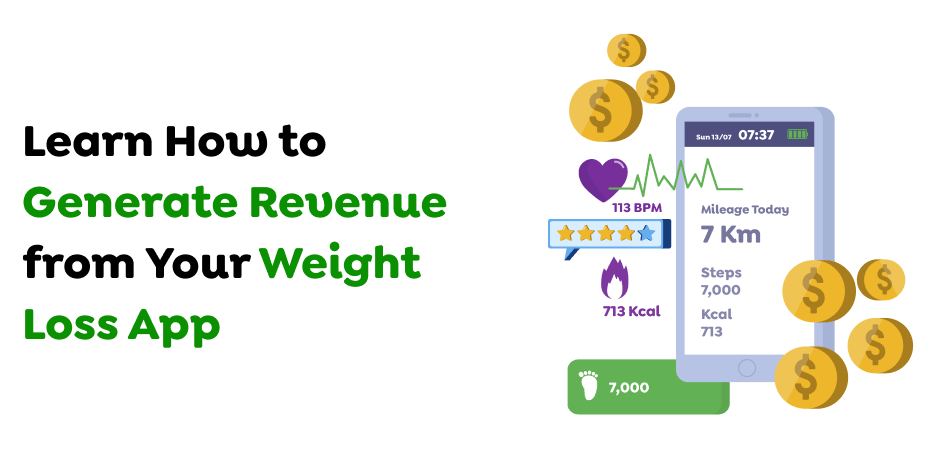
This option lets customers enjoy top-quality functions at an annual or monthly fee, including top-quality exercise routines, customized diet scheduling, and specific progress monitoring.
Users of weight loss apps could be charged a one-time fee for additional capabilities such as special recipes, individual training sessions with fitness trainers or nutritionists, and ad-free reports.
Doctor appointment app development that is on-demand can offer specific goods or services consumers must buy through the incorporated links and earn commissions through partnerships with wellness and fitness businesses.
Certain apps can integrate and protect user data on diet, workout routines, and weight loss patterns. For research purposes or marketing trends, fitness and health clubs could also find unlogged expenses in these records.
Let on-demand weight loss app development provide a basic set of features. Users must buy a premium membership to access more advanced features or content. Allowing uninterested customers to try the application before committing could be a great approach to turning them into paying customers.
Fitness apps’ future is set to become an exciting combination of personalization, innovation, and the use of data to improve wellness. Here are a few key trends to keep an eye on:
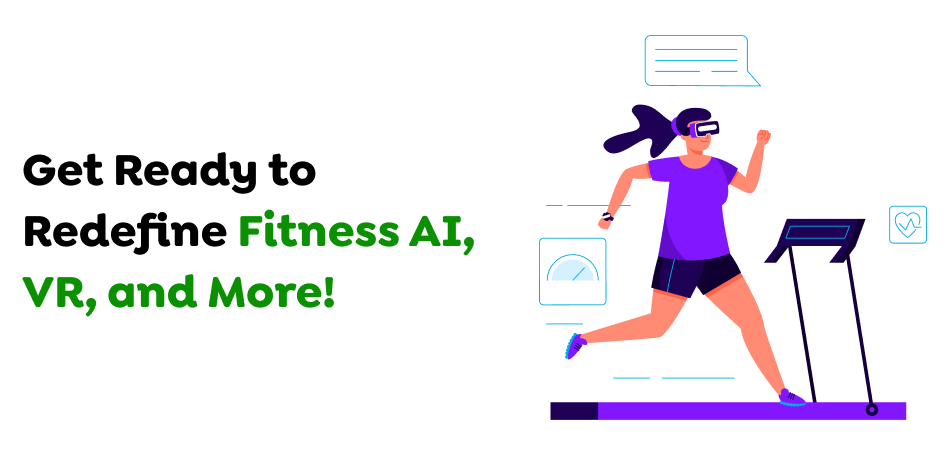
Artificial intelligence is expected to take on a larger role in the future. It can provide immediate feedback, customized workout recommendations, and adaptable meals based on information and performance. For instance, an AI coach can analyze your workout, offer changes, and track your improvement over time.
Seamlessly integrating wearable technology and advanced sensors will allow the next dimension of information collection. Fitness apps will use information from fitness trackers, smartwatches, and biofeedback sensors to present a comprehensive overview of health and well-being. They could also monitor sleep patterns, stress levels, and heart rate variations to develop customized fitness and recovery programs.
Gamification features will extend beyond points and leaderboards. AR/VR will be a common feature to provide immersive workout experiences, interactive challenges with other players, and personalized fitness games that can be tailored to individual goals and preferences.
Fitness apps will expand beyond losing weight and building muscles and take a more holistic approach to health and well-being. Features that help manage stress and mindfulness techniques, as well as prevention-based healthcare strategies, are expected to be included. Apps could also provide guided meditations, sleep monitoring, and analysis or connect users to mental health experts.
As fitness apps collect more personal health information, secure security measures and the user’s privacy will be essential. Blockchain technology may be a key factor in protecting the privacy of users and providing transparent data usage. Users will have greater control over their data and can choose what data they share with apps and third parties.
The freemium model is likely the norm. However, there could be an evolution toward greater flexibility in subscription options. Users can sign up for specific services or coaching programs according to their requirements rather than a standard premium plan.
The market will witness the rise of applications for specific demographics or fitness goals. Apps specifically designed for fitness during pregnancy, training with weights for athletes, and fitness programs designed for seniors are only some examples.
Losing weight can be a challenge. However, technology can help make it simpler. Numerous weight loss apps are available, but these five apps are thought to be the most effective in aiding you in reaching the weight reduction goals you have set for 2024.
![]()
LoseIt! is a complete weight loss application that monitors your diet and exercise. The app has a barcode scanner, which makes recording the food you eat simple. In addition, it comes with an extensive food database and the ability to build recipes, allowing you to create meals that are suited to your diet requirements. With the capability to set goals and keep track of your improvement, the LoseIt! The app helps you remain on track with losing weight.
MyFitnessPal is a well-known application for losing weight for its simplicity and user-friendliness. It comes with an eating diary that tracks what you eat and your calories. The app also has an inventory of over 6 million food items, making locating what you’re seeking simple. Furthermore, MyFitnessPal offers a wide array of tracking features, like tracking your water intake and progress in weight loss.
MyNetDiary is a total weight loss program ideal for people who wish to keep track of their diet and workout. It comes with the ability to scan barcodes, making keeping track of the food you consume simple. The app also comes with a vast database of food items, making locating what you’re looking for simple. In addition, MyNetDiary has a feature that lets you monitor your energy and mood and help you comprehend the relationship between your eating habits and overall health.
WW is a recognized weight loss program that has helped people shed weight for over 50 years. The app comes with a whole food tracking system, which allows you to track what you consume and the calories you consume. The app has a barcode scanner and an extensive database of food items, making it easy to monitor what you drink. Furthermore, WW offers a range of tools to help you track your goals, such as your water intake and your weight loss progress.
Noom is a full weight loss program created to help you shed weight by transforming your lifestyle and habits. The app comes with a food diary that tracks the food you consume and how many calories you take in. It also comes with various tracking options, like keeping track of your water intake and progress in losing weight. In addition, Noom offers a range of cognitive-behavioral and behavioral strategies that make it simple to keep track of your weight loss goals.
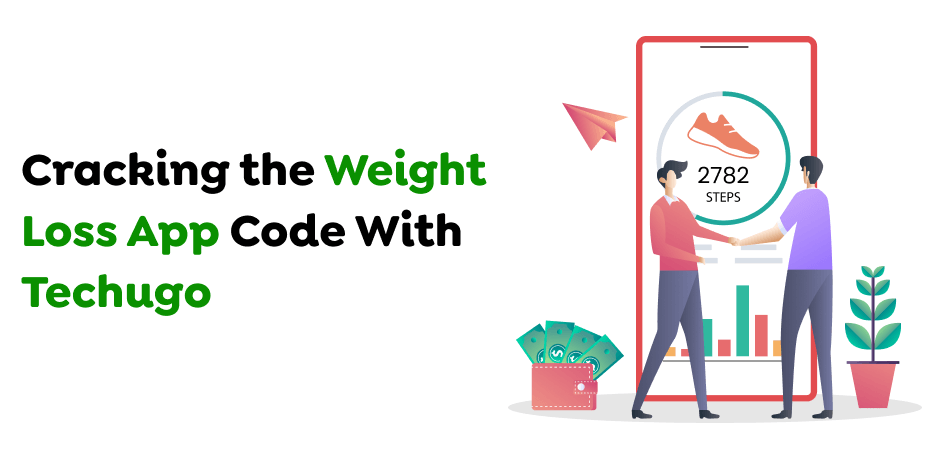
The fitness app market is growing, with programs for weight loss, such as Lose It!, being the leader. However, with all the alternatives available, how can you create a weight loss app that will stand out? Using an approach centered around users, genuine features, and an established intended audience, you can make an app that helps users succeed in their journey to lose weight.
This guide provides the information needed to help you navigate the development process, from understanding the fundamental functions to analyzing advanced features and costs. Remember that the most essential to success is providing a positive and enjoyable experience tailored to the user’s requirements. Are you prepared to develop your weight loss app? With an attentive plan, strong attention to UX, and a determination to innovate, it is possible to create an innovative app that can impact the ever-growing market for health and wellness.
Techugo can be your ideal development partner in this journey. With our expertise in mobile app development and a deep understanding of the fitness industry, we can help you bring your vision to life. We offer a comprehensive range of services, including app design, development, testing, and deployment. Our team of skilled professionals will work closely with you to create a weight loss app that not only meets your goals but also exceeds user expectations. Let’s build a successful weight loss app together! Contact us today to discuss your project.
Write Us
sales@techugo.comOr fill this form